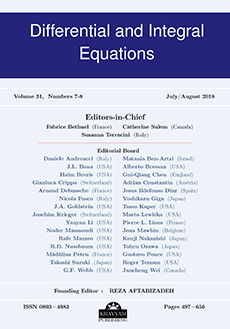Abstract
We study a model of an antibiotic resistance in a hospital setting. The model connects two population levels - bacteria and patients. The bacteria population is divided into non-resistant and resistant strains. The bacterial strains satisfy ordinary differential equations describing the recombination and reversion processes producing the two strains within each infected individual. The patient population is divided into susceptibles, infectives infected with the non-resistant bacterial strain, and infectives infected with the resistant bacterial stain. The infective classes satisfy partial differential equations for the infection age densities of the two classes. We establish conditions for the existence of three possible equilibria for this model: (1) extinction of both infective classes, (2) extinction of the resistant infectives and endemicity of the non-resistant infectives, and (3) endemicity of both infective classes. We investigate the asymptotic behavior of the solutions of the model with respect to these equilibria.
Citation
Erika M. C. D'Agata. Pierre Magal. Shigui Ruan. Glenn Webb. "Asymptotic behavior in nosocomial epidemic models with antibiotic resistance." Differential Integral Equations 19 (5) 573 - 600, 2006. https://doi.org/10.57262/die/1356050443
Information





